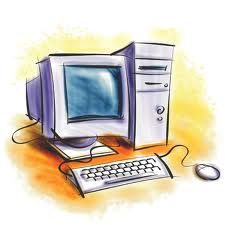GUI- a graphical user interface is a type of user interface that allows users to interact with electronic devices with images rather than text commands.
LINUX- is a computer operating system which is based on free and open source software, can be installed on a wide variety of computer hardware, ranging from mobile phones, tablet computers, routers and video game consoles, to desktop computers, mainframes and supercomputers.
MACINTOSH OS-Mac OS is a series of graphical user interface-based operating systems developed by Apple Inc. (formerly Apple Computer, Inc.) for their Macintosh line of computer systems.
MS-DOS- is an operating system for x86-based personal computers. It was the most commonly used member of the DOS family of operating systems.
MULTITASKING-Running two or more programs at the same time on the same single-processor (single CPU) computer.
may refer to the ff:
COMPUTER MULTITASKING-the apparent simultaneous performance of two or more tasks by a computer's central processing unit.
MEDIA MULTITASKING- could involve using a computer, mp3, or any other form of media in conjunction with one another.
HUMAN MULTITASKING- The ability of a person to perform more than one task at the same time.
NOS-Set of programs that, as a part of an operating system (OS), provide file and print services, directory services, and security to computers connected via a network.
OS-An operating system (OS) is software, consisting of programs and data, that runs on computers, manages computer hardware resources, and provides common services for execution of various application software.
SYSTEM SOFTWARE- is computer software designed to operate the computer hardware and to provide a platform for running application software.
APLICATION SOFTWARE- also known as an application or an "app", is computer software designed to help the user to perform specific tasks.
UNIX-Powerful, multi-user, multitasking, and extremely stable 32-bit computer operating system and the platform on which internet was built and continues to work.
UTILITY PROGRAM-A program that performs a specific task related to the management of computer functions, resources, or files, as password protection, memory management, virus protection, and file compression.

